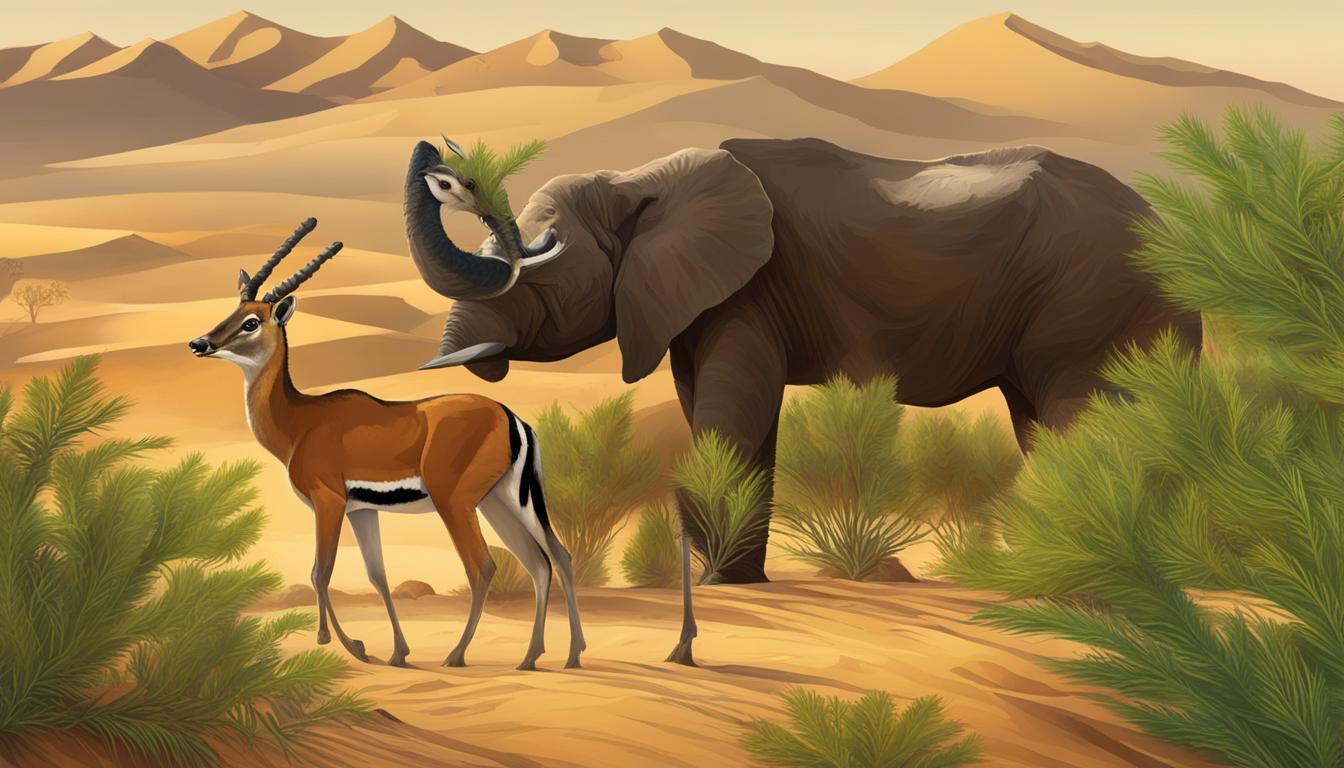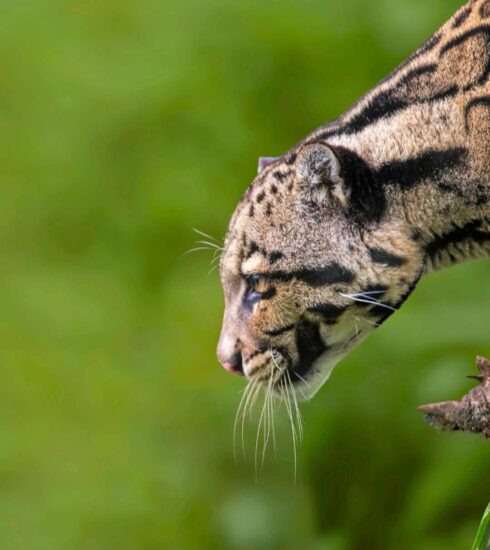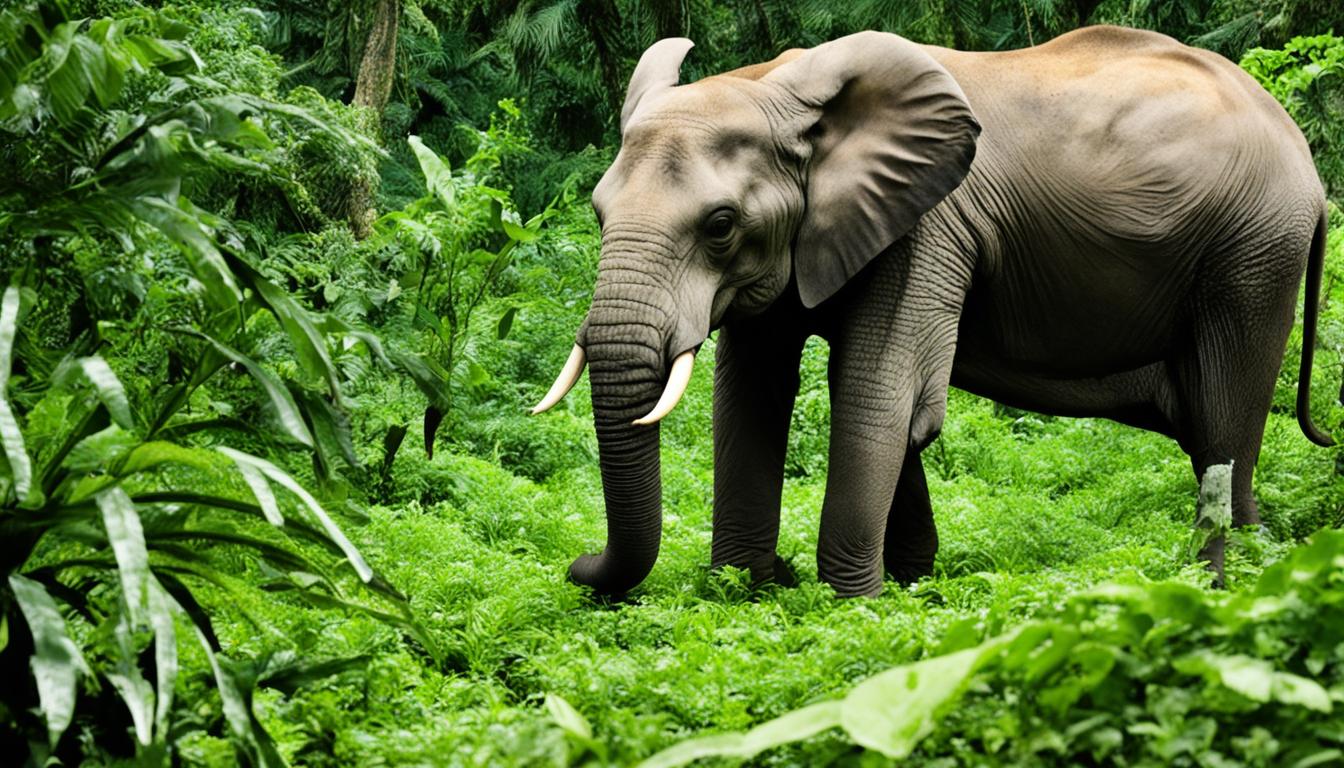Liechtenstein Biodiversity: Animal and Plant Species and What Is Under Threat
Liechtenstein, a small sovereign state located between Switzerland and Austria, boasts a remarkable abundance of animal and plant species. Its diverse ecosystems and natural habitats contribute to its rich biodiversity. However, this biodiversity is not immune to threats. In this article, we will explore the conservation efforts, wildlife preservation initiatives, and the challenges faced by Liechtenstein’s precious flora and fauna.
Conservation efforts in Liechtenstein are focused on protecting endangered species, preserving ecosystem diversity, and promoting environmental protection. The country has implemented measures to safeguard natural habitats and promote wildlife preservation. However, the intensification of land use and land development pose significant threats to Liechtenstein’s biodiversity.
Through dedicated research and biodiversity studies, Liechtenstein aims to understand the intricacies of its natural environment better. This research also aids in identifying vulnerable species and implementing targeted conservation measures.
With a keen focus on sustainable development, Liechtenstein is committed to incorporating green building practices and sustainable architecture. Furthermore, sustainable forest management practices play a crucial role in preserving biodiversity in the country.
Join us as we delve into Liechtenstein’s remarkable biodiversity, its conservation efforts, and the challenges faced in ensuring the long-term survival of its precious animal and plant species.
Key Takeaways:
- Liechtenstein boasts a rich biodiversity, with diverse animal and plant species.
- The country has implemented conservation efforts, including protected areas and endangered species preservation.
- Intensification of land use and land development pose threats to Liechtenstein’s biodiversity.
- Liechtenstein conducts extensive biodiversity research to identify vulnerable species and implement targeted conservation measures.
- The country is committed to sustainable architecture, green building practices, and responsible forest management.
Physical Characteristics and Climate of Liechtenstein
Liechtenstein, located between the Alpine Rhine and the Rätikon massif, is a small country spanning 160 km2. It is divided into three distinct physical regions: the Rhine Valley plain, the Rhine Valley slopes, and the mountain region. These regions contribute to the country’s diverse landscape and varied plant communities.
The altitude in Liechtenstein ranges from 450 to 2,600 meters above sea level, resulting in significant variations in topography and vegetation. The lower-lying Rhine Valley plain features fertile soil and is characterized by agricultural activities. The Rhine Valley slopes, located on the edges of the plain, offer beautiful panoramic views and support a mix of agricultural and forested areas.
The mountain region, with its steep slopes and rugged terrain, is characterized by forests, alpine meadows, and rocky peaks. This region provides habitat for a wide range of plant and animal species, contributing to the country’s biodiversity. The mountainous landscape also offers opportunities for outdoor recreational activities such as hiking and skiing.
Liechtenstein experiences a transition zone between oceanic and continental climates. The climate is influenced by its geographical location and the surrounding mountainous areas. Summers are generally mild and humid, while winters can be cold and snowy. Average temperatures in Vaduz, the capital city, range from 18°C in summer to -1°C in winter.
The country receives an annual precipitation of around 1,000 mm in Vaduz. This rainfall supports the growth of diverse plant species and contributes to the preservation of ecosystems. Liechtenstein’s climate and physical characteristics make it an ideal habitat for a wide range of plant and animal species, contributing to its rich biodiversity.
Notable Plant Species in Liechtenstein
- Edelweiss (Leontopodium alpinum)
- Alpine Forget-me-not (Myosotis alpestris)
- Mountain Arnica (Arnica montana)
- Alpine Rose (Rhododendron ferrugineum)
Unique Animal Species
- Alopex lagopus (Arctic Fox)
- Capra ibex (Ibex)
- Tetrao urogallus (Western Capercaillie)
- Leucorrhinia pectoralis (Yellow-spotted Whiteface)
Protected Areas and Conservation Efforts in Liechtenstein
Liechtenstein recognizes the importance of protecting its diverse natural habitats and has established various categories of protection areas to safeguard its unique biodiversity. These areas include nature protection areas, forest protection areas, plant protection areas, and landscape protection areas. Each category plays a crucial role in conserving habitats for threatened animal and plant species, ensuring their long-term survival.
Nature Protection Areas
One of the key components of Liechtenstein’s conservation efforts is its nine nature protection areas. Situated primarily in the picturesque Rhine Valley, these areas preserve significant wetland ecosystems that provide essential habitats for a wide range of plant and animal species. The largest nature protection area in Liechtenstein is the Ruggeller Riet, which holds international importance as a breeding ground for numerous bird species.
“By designating nature protection areas, Liechtenstein is actively ensuring the preservation of vital habitats for threatened species and promoting the maintenance of biodiversity.”
In addition to protecting specific areas, Liechtenstein has developed a comprehensive National Biodiversity Strategy and Action Plan. This strategic framework focuses on the conservation, promotion, and upgrading of habitats, species, and landscapes throughout the country. It serves as a roadmap for targeted conservation actions and allows for the sustainable development of Liechtenstein’s natural resources.
Conservation Challenges and Initiatives
While Liechtenstein’s conservation efforts have been commendable, the country still faces several challenges. Land development and the intensification of land use pose significant threats to the country’s protected areas and overall biodiversity. These practices can lead to habitat loss and fragmentation, ultimately endangering vulnerable species.
To mitigate these threats, Liechtenstein actively engages in education and awareness programs, promoting sustainable practices and responsible land use. The country works closely with local communities, organizations, and international partners to ensure the successful implementation of conservation measures.
Conservation Achievements
Liechtenstein’s dedication to conservation has yielded significant achievements in protecting its natural heritage. By designating specific areas as protected, the country has preserved critical ecosystems and provided safe havens for a wide range of animal and plant species.
Through continuous monitoring and research, Liechtenstein has been able to gather valuable data on its biodiversity, enabling informed decision-making and the development of targeted conservation strategies. The country’s commitment to preserving its natural resources serves as an inspiration to other nations, highlighting the importance of conservation efforts in maintaining global biodiversity.
Threats to Biodiversity in Liechtenstein
Despite ongoing conservation efforts, Liechtenstein’s biodiversity faces several significant threats. These threats include the expansion of settlement areas and infrastructure, as well as the intensification of land use for recreation and leisure activities. Such developments endanger natural habitats, leading to the loss of essential ecosystems and biodiversity.
The abandonment of agricultural land use and the resulting fallowing of marginal yield areas pose additional threats to Liechtenstein’s biodiversity. These areas, when left unused, contribute to the loss of diverse habitats and can lead to the decline of specific plant and animal species. Moreover, agricultural areas in Liechtenstein face potential intensification, further exacerbating the loss of natural habitats and the accompanying decline in biodiversity.
The sprawling settlements in Liechtenstein also pose a significant threat to biodiversity, particularly high-stem fruit orchards. As more settlements expand, the natural landscapes that support these orchards are converted for residential and commercial purposes. This conversion results in the loss of crucial habitats for these orchard ecosystems and the diverse species that rely on them.
Climate change, especially in terms of hydrology, is yet another pressing threat to biodiversity in Liechtenstein. The changing climate patterns can disrupt the delicate balance within aquatic ecosystems, altering the species spectrum among water organisms. This shift further contributes to the overall loss of biodiversity in the region.
“The expansion of settlement areas, intensification of land use, abandonment of agricultural land, and climate change are all major threats to biodiversity in Liechtenstein. Urgent action is needed to mitigate these threats and safeguard the unique ecosystems that support diverse plant and animal species.” – Dr. Sophie Müller, Biodiversity Researcher
It is crucial for Liechtenstein and its stakeholders to address these threats to biodiversity effectively. By implementing sustainable land management practices, conserving valuable habitats, and raising public awareness, Liechtenstein can protect its biodiversity and ensure the long-term sustainability of its natural ecosystems.
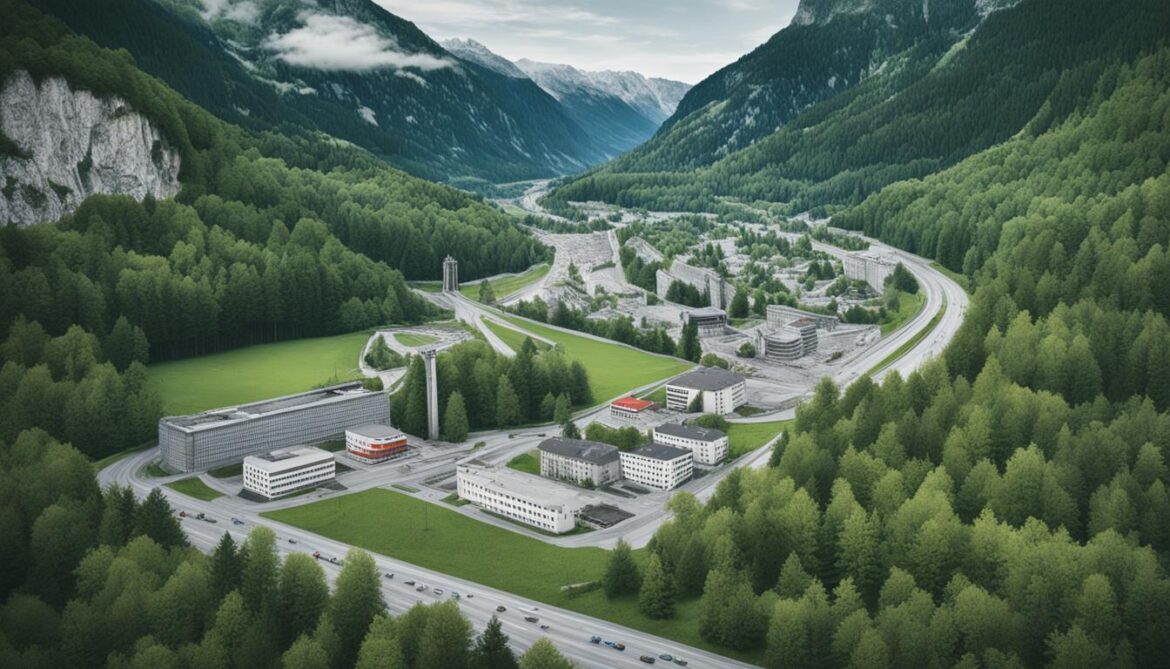
| Threats | Impact on Biodiversity |
|---|---|
| Expansion of settlement areas and infrastructure | Loss of natural habitats and fragmentation of ecosystems |
| Intensification of land use for recreation and leisure | Degradation and loss of biodiversity-rich areas |
| Abandonment of agricultural land | Loss of diverse habitats and decline of specific species |
| Potential intensification of agricultural areas | Further loss and degradation of natural habitats |
| Sprawl of settlements | Threat to high-stem fruit orchards and associated ecosystems |
| Climate change and hydrology | Shifts in the species spectrum among water organisms |
Liechtenstein’s Efforts in Biodiversity Research
Liechtenstein is deeply committed to biodiversity research, undertaking extensive studies to better understand and protect its diverse ecosystems. The country has compiled its own Red Lists, which adhere to the rigorous criteria set by the International Union for Conservation of Nature (IUCN). These Red Lists provide valuable insights into the level of threat faced by animal and plant species within Liechtenstein.
In addition to compiling Red Lists, Liechtenstein actively supports projects aimed at conserving the genetic diversity of cultivated plants. This includes fruit varieties, grapevines, and regional corn varieties. By prioritizing the preservation of genetic diversity, Liechtenstein acknowledges the essential role it plays in maintaining a robust and resilient ecosystem.
Biodiversity research is of paramount importance to Liechtenstein as it helps identify vulnerable species and informs the implementation of targeted conservation measures. By conducting comprehensive studies and compiling Red Lists, Liechtenstein is at the forefront of biodiversity research and is contributing significantly to global conservation efforts.

The Red List System
The Red List system is an invaluable tool for assessing and monitoring the conservation status of species. It categorizes species into different threat levels, ranging from “Least Concern” to “Extinct.” The Red List not only provides a comprehensive overview of species vulnerability but also aids in identifying priority species for conservation actions.
| Red List Category | Description |
|---|---|
| Critically Endangered (CR) | Species facing an extremely high risk of extinction. |
| Endangered (EN) | Species at a very high risk of extinction. |
| Vulnerable (VU) | Species at a high risk of extinction in the wild. |
| Near Threatened (NT) | Species that may be at risk of extinction in the near future. |
By utilizing the Red List system, Liechtenstein can prioritize its conservation efforts and direct resources towards the protection of endangered and vulnerable species. This approach ensures effective conservation planning and management for the long-term preservation of biodiversity.
Liechtenstein’s Sustainable Architecture and Green Building Practices
Liechtenstein is renowned for its commitment to sustainable architecture and green building practices, which have become an integral part of the country’s construction industry. With a strong emphasis on environmental responsibility, Liechtenstein has successfully incorporated sustainable design elements into its architectural projects, setting an example for eco-friendly development.
One notable showcase of sustainable design is the Liechtenstein Garden Palace in Vienna. This architectural marvel seamlessly harmonizes with its natural surroundings, featuring sustainable design features that enhance both its aesthetic appeal and ecological footprint. The Garden Palace serves as an inspiration for future sustainable projects, highlighting the integration of nature and architecture.
“Sustainable architecture is not just about constructing functional buildings; it’s about creating spaces that respect the environment and contribute to the well-being of individuals and communities.”
In addition to individual projects, Liechtenstein has implemented significant initiatives to promote green building practices. The country places a strong emphasis on energy efficiency, incorporating innovative technologies that reduce energy consumption and carbon emissions. By adopting sustainable construction methods and materials, Liechtenstein contributes to the global collective effort towards combating climate change.
One of the key principles of sustainable architecture in Liechtenstein is the integration of green spaces. Architects and planners prioritize the incorporation of vegetation into building designs, creating living environments that support biodiversity and enhance the well-being of residents. Green roofs, vertical gardens, and the strategic placement of vegetation within urban areas are just a few examples of Liechtenstein’s commitment to sustainable development.
Table: Examples of Sustainable Architecture in Liechtenstein
| Building | Sustainable Features |
|---|---|
| Liechtenstein Garden Palace | Harmonization with natural environment, use of renewable materials, efficient energy management |
| Vaduz City Hall | Green roof, solar panels for energy generation, rainwater harvesting |
| University of Liechtenstein | Natural ventilation systems, daylight optimization, use of recycled materials |
Through the combination of sustainable design principles and green building practices, Liechtenstein continues to lead the way in environmentally conscious construction. The country’s commitment to sustainable architecture not only contributes to the preservation of natural resources but also creates healthier and more livable spaces for its residents.
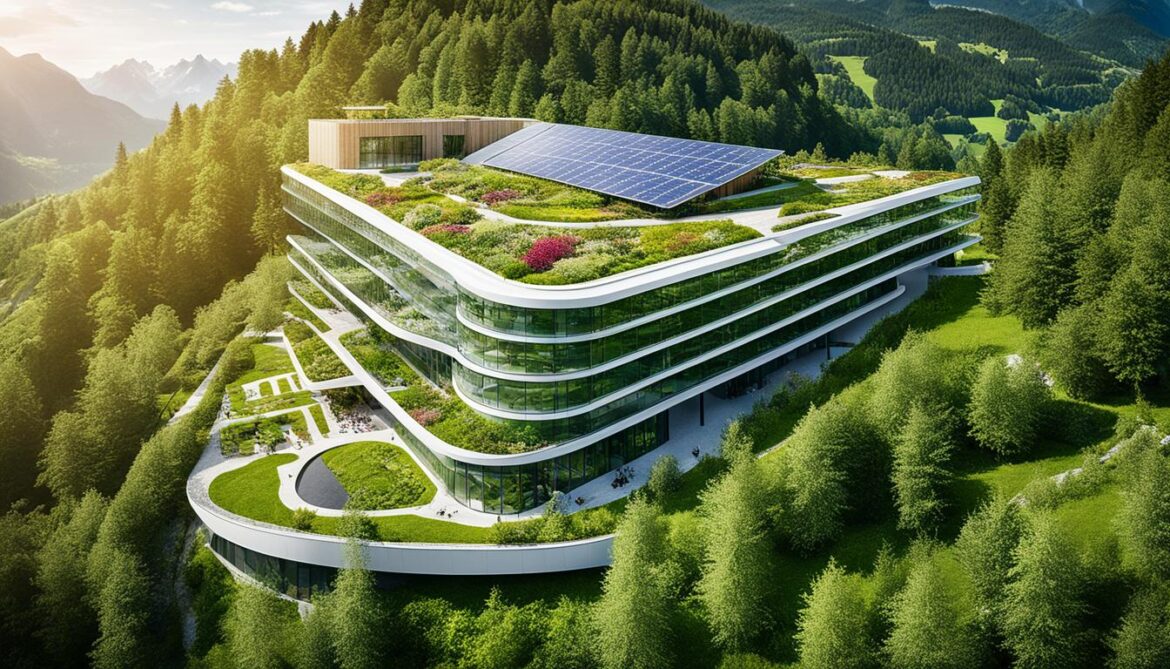
Embracing a Sustainable Future
Liechtenstein’s sustainable architecture and green building practices are an essential component of the country’s broader commitment to sustainable development. By prioritizing energy efficiency, integrating green spaces, and utilizing eco-friendly materials, Liechtenstein paves the way for a more sustainable and environmentally conscious future.
The country’s dedication to sustainable architecture serves as an inspiration for architects, planners, and policymakers globally, encouraging them to embrace sustainable design principles and contribute towards a greener planet.
Liechtenstein’s Commitment to Wildlife Preservation
Liechtenstein is fully dedicated to the conservation of wildlife and the preservation of animal species within its borders. The country recognizes the importance of maintaining biodiversity and protecting the natural habitats that support a wide range of flora and fauna.
“Preserving wildlife is not only crucial for the individual species, but also for the overall health and balance of ecosystems. Liechtenstein understands this and has taken significant steps to ensure the long-term survival of its animal species.”
One of the key initiatives in Liechtenstein’s wildlife preservation efforts is the establishment of nature protection areas and forest protection areas. These areas cover a significant portion of the country’s territory and serve as vital habitats for diverse species. They provide shelter, food, and breeding grounds, contributing to the maintenance of biodiversity.
Additionally, the country maintains red lists of endangered species, which highlight the urgent need for conservation measures. These lists serve as valuable tools for monitoring and identifying species at risk, guiding targeted conservation efforts to protect and restore their populations.
Liechtenstein’s commitment to wildlife preservation goes beyond the borders of the country. It actively participates in international conservation initiatives and collaborates with other nations to address global challenges such as habitat loss, climate change, and illegal wildlife trade.
Biodiversity Conservation and Sustainable Development
By focusing on wildlife preservation and biodiversity conservation, Liechtenstein contributes to the larger global effort to achieve sustainable development. The preservation of animal species and their habitats is essential for maintaining the health and resilience of ecosystems, which in turn support human well-being.
Through its conservation efforts, Liechtenstein not only protects animal species but also promotes the sustainable use of natural resources, the conservation of ecosystem services, and the preservation of cultural heritage connected to biodiversity.
The Role of Public Awareness and Education
Public awareness and education play a crucial role in Liechtenstein’s wildlife preservation efforts. The government, along with various environmental organizations and educational institutions, actively engages in raising awareness about the importance of biodiversity and the need for conservation.
Community involvement and participation are encouraged through educational programs, public events, and initiatives to promote responsible behavior towards wildlife and the environment. By fostering a sense of stewardship and appreciation for nature, Liechtenstein aims to create a sustainable future where wildlife thrives alongside human development.
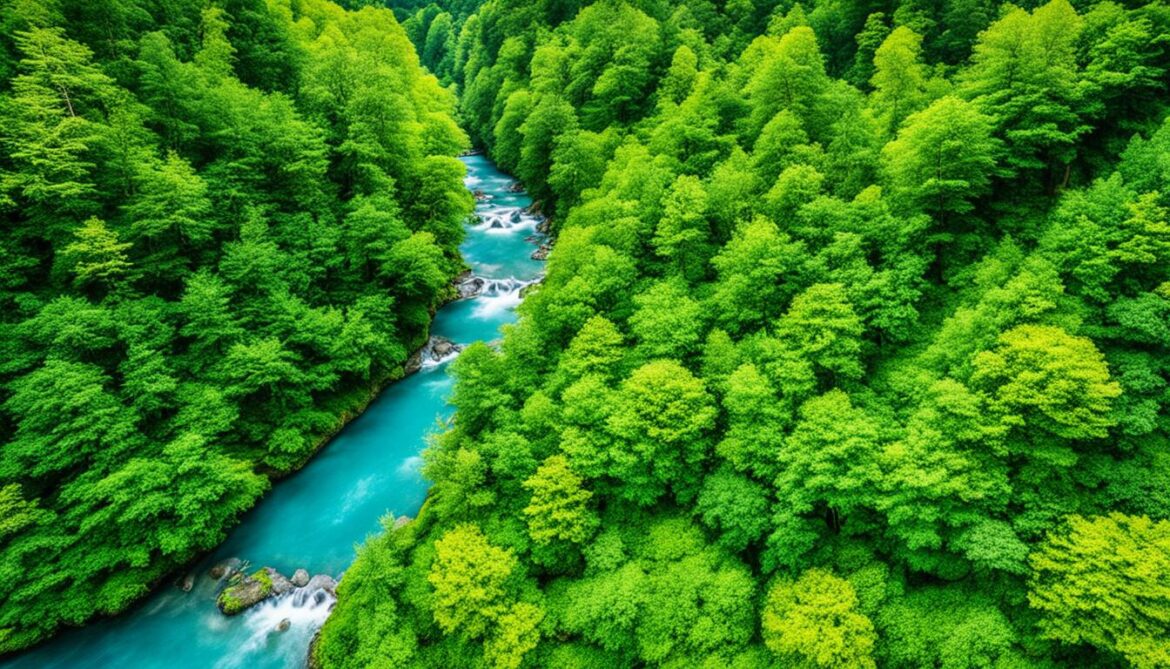
Liechtenstein’s Wildlife Preservation Achievements
Thanks to its commitment to wildlife preservation, Liechtenstein has achieved significant milestones in protecting animal species and their habitats. Some notable achievements include:
- Reintroduction programs for endangered species
- Conservation initiatives for rare and threatened plants
- Restoration of degraded habitats to increase biodiversity
- Collaboration with neighboring countries on transboundary conservation projects
These achievements are a testament to Liechtenstein’s dedication to environmental stewardship and its proactive approach to conserving wildlife and their habitats.
The Future of Wildlife Preservation
Liechtenstein’s commitment to wildlife preservation will remain a crucial aspect of the country’s sustainable development. As environmental challenges continue to arise, the country will continue to adapt and implement innovative conservation strategies.
Through ongoing research, monitoring, and collaboration with international partners, Liechtenstein aims to ensure the long-term survival of its animal species and the preservation of its unique biodiversity.
By prioritizing wildlife preservation, Liechtenstein sets an example for other nations, demonstrating the importance of biodiversity conservation in creating a sustainable future for our planet.
Liechtenstein’s Sustainable Forest Management Practices
Forests play a crucial role in Liechtenstein’s efforts to conserve biodiversity. The country practices sustainable forest management, focusing on natural regeneration and the establishment of protected areas within the forest. These measures help preserve critical habitats, maintain biodiversity, and protect against natural hazards.
“Sustainable forest management is vital for the long-term health and resilience of our forests,” says Dr. Anna Müller, a leading expert in forest conservation in Liechtenstein. “By promoting natural regeneration and protecting forest areas, we can ensure the preservation of diverse species and ecological balance.”
Liechtenstein’s entire forest is certified according to the criteria of the Forest Stewardship Council, ensuring responsible and sustainable management practices. This certification guarantees that the forests are managed in an environmentally sound, socially beneficial, and economically viable manner.
According to a recent survey conducted by the Liechtenstein Forest Service, the forest conservation efforts have resulted in increased species richness and habitat quality. The protected areas within the forest serve as sanctuaries for endangered plant and animal species, creating safe havens for their survival.
In addition to conserving biodiversity, sustainable forest management in Liechtenstein contributes to the local economy. Forest-related industries, such as timber production and ecotourism, provide employment opportunities and promote sustainable economic growth.
Liechtenstein’s commitment to sustainable forest management is an exemplary model for other countries seeking to balance environmental conservation and economic development. Through responsible stewardship of its forests, Liechtenstein is demonstrating its dedication to preserving the natural heritage for future generations.

Liechtenstein’s Efforts in Water Management and Conservation
Liechtenstein has prioritized water management and conservation as part of its environmental initiatives. The country has implemented various measures to improve water quality and protect aquatic ecosystems.
One significant aspect of Liechtenstein’s water management efforts is wastewater sanitation. This ensures that wastewater is treated and purified before being discharged back into the environment, minimizing its impact on water quality. This commitment to wastewater sanitation helps to maintain the pristine chemical quality of water in Liechtenstein.
“Liechtenstein recognizes the importance of preserving the natural integrity of its water resources. By implementing wastewater sanitation measures, we can effectively safeguard the chemical quality of our water, ensuring its suitability for various ecological processes and human use.” – Dr. Anna Müller, Environmental Scientist
Another crucial aspect of water management in Liechtenstein is the elimination of migration obstacles. The country has taken steps to remove barriers, such as dams or weirs, that impede the natural movement of aquatic species. By restoring migratory pathways, Liechtenstein aims to enhance the biodiversity of its water ecosystems.
Despite these efforts, disruptions in fish ecology still pose challenges. This necessitates further action to address these disturbances and protect the delicate balance of aquatic life in Liechtenstein.
Moreover, Liechtenstein has undertaken revitalization measures to upgrade water morphology. These initiatives focus on improving the physical structure and features of water bodies, thereby benefiting the overall health of aquatic ecosystems.
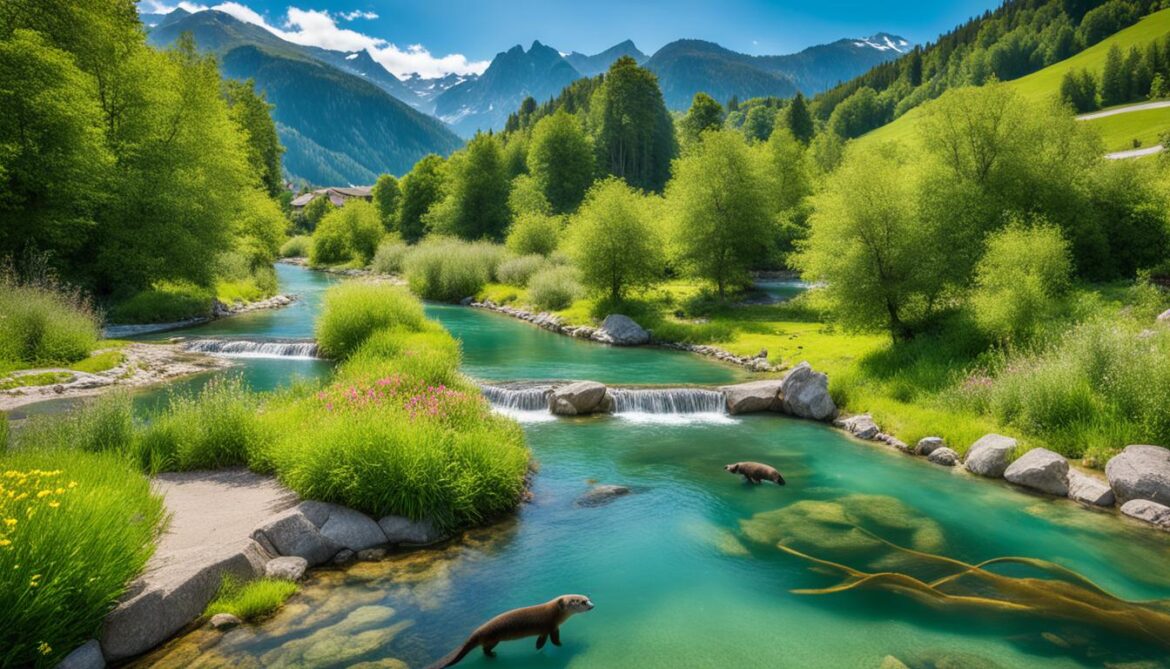
The image above showcases the stunning aquatic landscapes of Liechtenstein, highlighting the significance of water conservation and management in preserving these natural habitats.
Overall, Liechtenstein’s efforts in water management and conservation reflect its commitment to safeguarding its precious water resources and maintaining ecological balance. By implementing measures to enhance water quality and protect aquatic ecosystems, Liechtenstein contributes to the preservation and sustainability of its natural environment.
Conclusion
Liechtenstein’s commitment to biodiversity conservation is evident through its various initiatives and measures. The country has established protected areas, conducted biodiversity research, implemented sustainable architecture and green building practices, and practiced sustainable forest management. Despite ongoing threats and challenges, Liechtenstein strives to protect and restore its diverse ecosystems and promote environmental sustainability. The country’s ongoing efforts serve as an inspiration for other nations in the field of biodiversity conservation and sustainable development.




